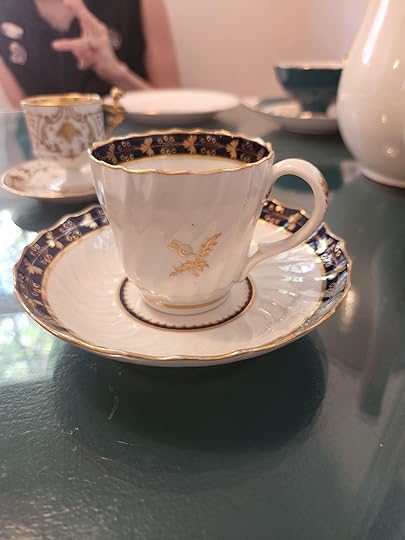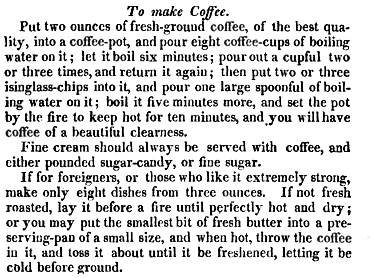The Time Machine: Coffee Houses
If you’re here on my blog, you probably love a coffee shop. (If you’re a tea-only person and prefer the tea house, I have a post for you, too)
How many of you have pitched a laptop or tablet at a rickety table with a hard wooden chair, listened idly to the hum of chatter, the clinking of ceramic, and the growl of the milk steamer? Bang, bang, bang, goes the barista, before locking fresh espresso back into the machine. They call your name and you grab your hot black essence or blended tan cloud and cling to it like it’s the actual nectar of the creativity gods, infused with inspiration and focus. The warm, toasty aroma surrounds you, the noises fade into the corners of your awareness, and you just know you’re going to get So Much writing done.
Or maybe you’re there to meet a friend. You chat about anything and everything, while the world, including the drink you went there for, falls away. It’s a vehicle, really, an excuse to spend time together and get caught up on the news of the day, as much a setting detail and prop as the chalkboard displaying the day’s special and some witty pun.
A lot of you probably remember the Starbucks boom in the late 90s-early 2000s. It seemed like overnight, there were diners where you could get coffee and then suddenly, there were Seattle-based megachains and drive-thrus everywhere. Well, Starbucks did not invent the coffee shop craze. 200 years earlier, they were all the rage.
~This post contains affiliate links. If you’re interested in any of these items, please consider purchasing through the link provided. It gives me a little bit of Jeff Bezos’ filthy, filthy lucre because writing full time is expensive, and he doesn’t need the money for more joyrides in space.  ~
~
 An authentic coffee cup from the 1790s, my friend generously allowed me to use in my YouTube video!
An authentic coffee cup from the 1790s, my friend generously allowed me to use in my YouTube video!Coffeehouses in the Georgian era looked a lot like how we expect them to: comfortable furniture, bookshelves, tasteful decorations. And part of that is because of branding. Coffee was perceived as the anti-alcohol. It stimulated rather than dulled, invigorated rather that sedated, it encouraged calm intellectual discourse rather than feuling baser passions. No one ever started a brawl because they had too much espresso. At least, that was the perception, as we’ll get to, in a moment.
You see, this was the Englightenment, a period of time when Europe was spending a lot of time thinking. They were debating the nature of Man, of government and kings, of God, of the structire of society, of the past and present and future, or money, of art, of the science of the earth and the stars. They were thinking about thinking. And they were gathering to talk about what they were thinking about. Coffee culture was caused by the Enlightenment, and it fuelled it. People (men) from all walks of life gathered in these comfy, well-outfitted coffee houses, and discussed the matters of the day.
So what did they actually serve?
Coffee at a coffee house was more like diner coffee then, than what we think of today. It wasnt thick foamy espresso or a blended drink that, let’s face it, is a coffee flavoured milkshake. It did often have milk and sugar, and just a little fish bladder.
Well, fish bladder or skin; egg whites or shell. Let me explain. The recipe, pasted below, from Maria Eliza Kettleby Rundell’s 1808 cookbook, New System of Domestic Cookery, calls for the boiling of coffee grounds for a total of eleven minutes, with at least ten minutes of steeping time. That makes a muddy coffee. Isinglass is a sort of gelatin-like substance made from the swim bladders of fish like sturgeon. It’s the collagen, present in eggs and actual gelatin, that will soak up those impurities like a magnet and rise to the surface in a kind of foam, which you can skim off. This creates a wonderful clarity and gives it a bit of a smoother mouthfeel, that some might find negates the need for cream and sugar at all.

For those of you struggling to see the image, here is the text:
Put two ounces of fresh-ground coffee, of the best quality, into a coffee-pot, and pour eight coffee-cups of boiling water on it; let it boil six minutes; pour out a cupful two or three times, and return it again; then put in two or three isinglass-chips into it, and pour one large spoonful of boiling water on it; boil it five minutes more, and set the pot by the fire to keep it hot for ten minutes, and you will have coffee of a beautiful clearness.
Fine cream should always be served with coffee, and either sugar-candy or fine sugar.
If for foreigners, or those who like it extremely strong, make only eight dishes from three ounces. If not fresh roasted, lay it before a fire until perfectly hot and dry; or you may put the smallest bit of fresh butter into a preserving-pan of a small size; and when hot, throw the coffee in it, and toss it about until it be freshened, letting it be cold before ground.
Now, if you’re more of a visual person, fear not! I made a video, showing you how to do it!
Coffeehouses were often called penny universities, or universites in a cup (one article on the subject called them the internet in a cup, which I don’t disagree with), because for the price of a penny at the door, you could get a cup of coffee, all the extras like milk and cream, and any other services the house provided. For a penny, you had access to whatever conversations were going on. People from all walks of liife could mingle and get different perspectives, they could hear the news of the day (newspapers were performed out loud), they could interact directly with politicians, clergy, gentry, the business owners, ‘the middling sort’ (middle class people), writers and artists, foreigners, day labourers, and even criminals. Some people spent so much time at coffee houses that they listed the house as their mailing address!
Now, of course, it wasn’t just coffee sold here. There was a healthy dose of elitism about coffee house being temples of rationalism vs taverns and alehouses etc as dens of sin, but the line between them was a lot more blurry. People are going to make money however they can, and if the intellectuals want beer and gin, they’re going to get it.
One notorious coffeehouse went a step further. King’s Coffee House, run by Tom and Moll King, and known colloquially as King’s College, served as a sort of brothel-adjacent venue. They couldn’t host sex workers because that was illegal, and in fact the only bed on the premises’ was the Kings’ own, but they did host sort of meet-cutes for sex workers to meet with potential clients and take them elsewhere to perform their services.
So I mentioned earlier how The Enlightenment and coffee culture influenced each other, and now that you’ve seen how people came together over a hot cup of Joe, with even the consideration of foreign tastes written into the official recipe, it’s not hard to see how the inevitable outcome was rapid and vigourous social change. When people from different backgrounds, with different experiences and obstacles, come together and talk, it’s difficult not to be affected.
This was a classic example of a third space, a place for people to go other than work and home. At the affordable price of a penny, a man could gain access to news and ideas, and make his own voice heard, which was a level of social fluidity rarely seen before.
Now, of course, this is a very shallow understanding of the coffeehouse and the impact on society and history. If you would like a deeper dive into the rise and fall, the role of women, and other social criticisms, do let me know. I actually would love to look closer, as well as at the real meat and potatoes of the tea trade. Let me know!
In the meantime, check out my video on YouTube!



